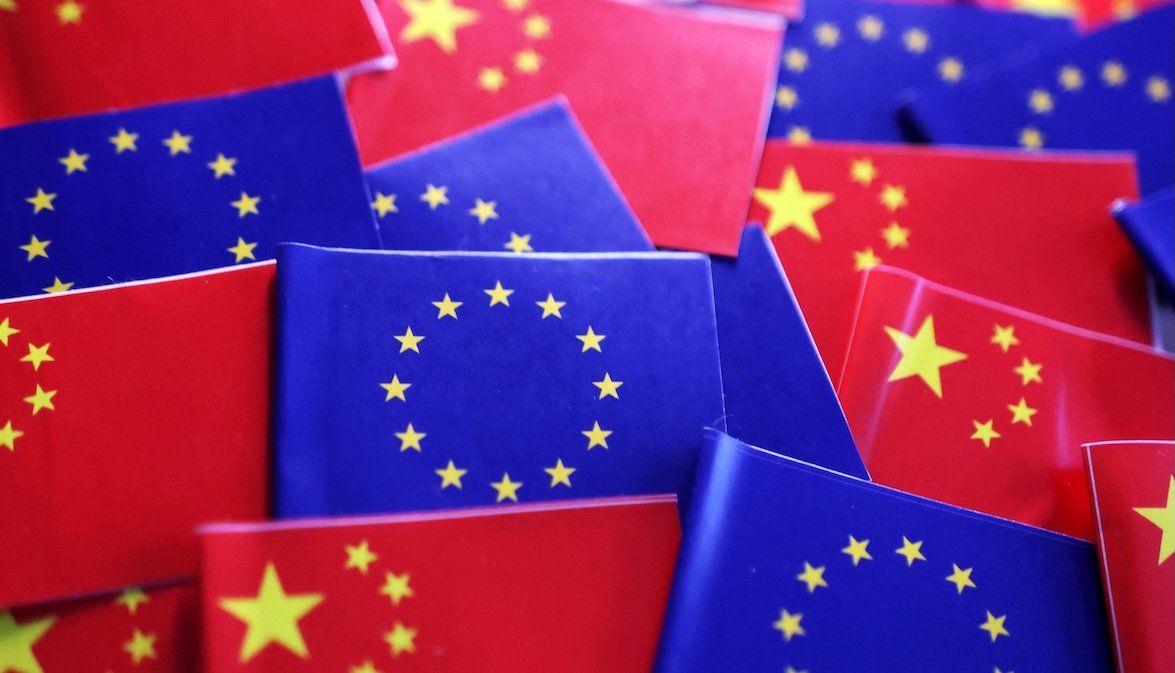EU and Chinese flags in an illustration.
European leaders have much to worry about when it comes to trade and economic growth. In March, Donald Trump imposed 25% tariffs on steel, aluminum, and cars coming from Europe. Last week, he added a 20% tariff on virtually everything else that Europe exports to the US. On Wednesday, the EU responded by announcing tariffs on a broad range of US-exported products that could affect about $23 billion worth of goods. Then, later on Wednesday, Trump suddenly included the EU among those who would see tariff rates fall back to 10%. The whiplash from Washington continues.
But European leaders are also concerned about China, which continues to flood the EU with goods, particularly electric vehicles, that undercut European manufacturers on price. That’s a problem that could get worse quickly if Chinese goods normally destined for the US are diverted by Trump tariffs toward Europe – a problem that looked even more serious after Trump’s Wednesday announcement that he would raise the “tariff charged to China by the United States of America to 125%, effective immediately.”
European Commission President Ursula von der Leyen held a call with Premier Li Qiang earlier this weekand said afterward that EU and Chinese leaders should work together toward a “negotiated resolution” to any trade conflicts between them and provide “stability and predictability” for the global economy.
There is also an opportunity here for President Xi Jinping. China has a strategic interest in helping to divide the US from Europe. Demonstrating to European leaders that China can become a force for economic stability at a time when Trump is waging a trade war on allies and rivals alike would further that goal.